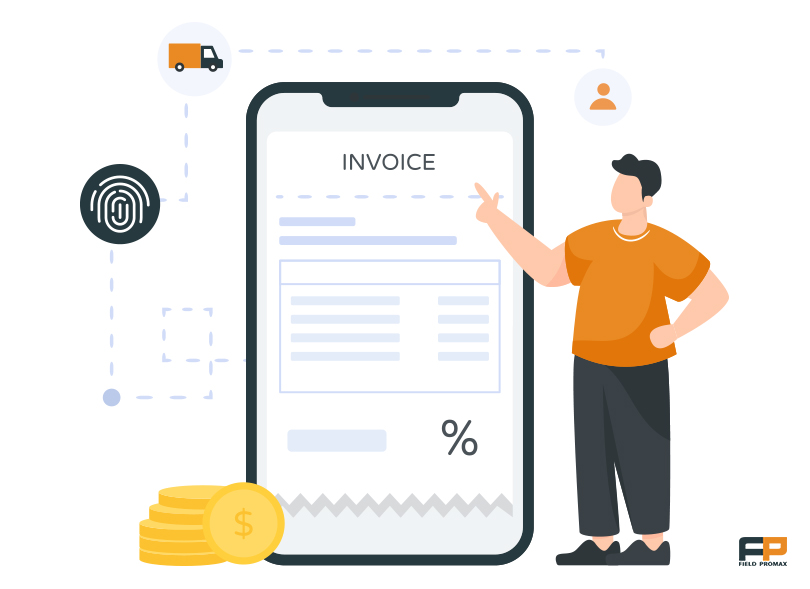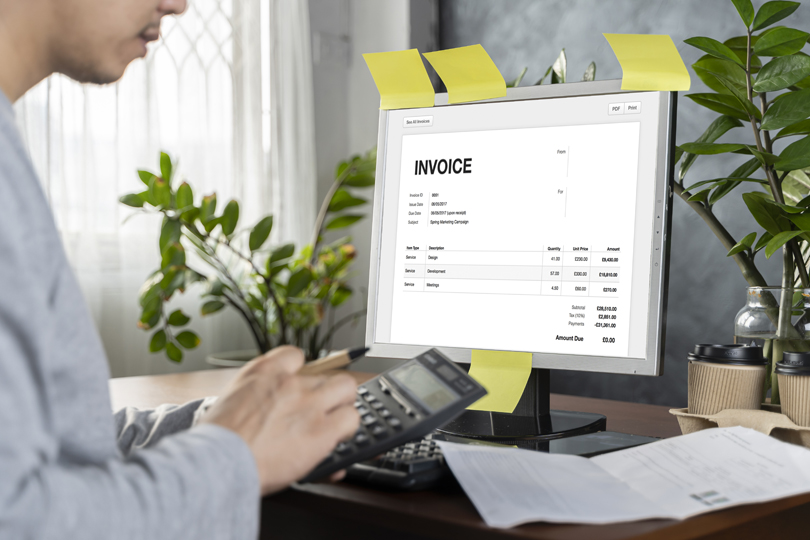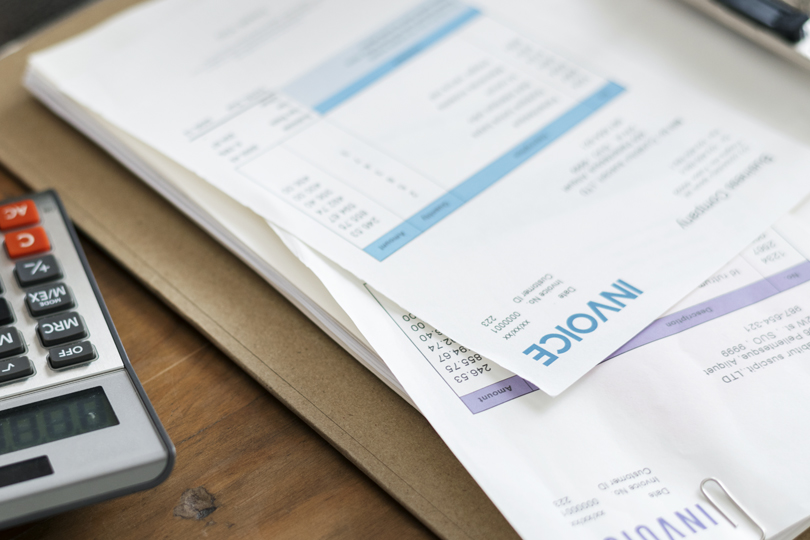

Invoicing is one of the most crucial business operations for any company. It does not only maintain your cash flow but is also responsible for revenue generation. In short, it is invoicing that helps you get timely payments for running your business successfully. However, when to send an invoice to your customers can be a touchy subject for field service management.
The most crucial task a service business owner faces is sending invoices for their services or work done. The question is—when should you send an invoice to clients? Can you send an invoice before the work is done, or do you need to send an invoice before or after payment? Or invoice before service?
Invoicing a customer before a job might seem like an easy answer to the problem—you get paid quickly upfront, and your payroll schedule stays on track. Having said that, the best time to send an invoice depends on the type of service you offer, your business needs, and your relationship with the customer.
When it comes to field service, the task becomes even more complex. But what if the scope of the work changes after you’ve started and you need to make a price adjustment? That’s a new challenge. On the other hand, what if you’re rushing from one job to another? Then, invoicing right after the job isn’t always convenient. But if you wait, you risk forgetting or disrupting your cash flow.
Streamline billing and invoicing with Field Promax to maximize revenue. Sign up Now!
Considering the risks, the question of when to send the invoice in the service delivery business has always remained a disputable issue. And most business owners, especially small field service companies, struggle to figure out the right time. But like every other market practice, invoicing in the field service business also follows some standard business principles. And in this blog, we are here to explain it all. Go through the discussion and manage your billing and invoicing processes efficiently so that your cash flow is never disrupted and you are always on track with your goal to make more
What is an Invoice?
Before we proceed to explain the best invoicing practices, let us take a quick look at the true meaning and importance of invoices.
An invoice is an itemized list of products sold or services provided, along with the amount of money owed for each line item and the total amount of money owed. An invoice is sent from the biller to the client in hopes of being paid within a certain amount of time.
What is the Difference Between a Bill and an Invoice?
Following this definition, it is evident that an invoice is different from a bill or a receipt. A receipt is different from an invoice in that an invoice is requesting payment for products or services received, whereas a receipt is proof that the services or products have already been paid for. An invoice comes before the payment has been made, while a receipt comes after the payment has been made. In other words, you would send an invoice after a service has been completed and money is owed, and then you would send a receipt after you receive the payment from the invoice. On the other hand, if you are a customer, the invoice you receive is your bill, and then you will receive a receipt once you pay your bill. So, the process can be formulated in the following way:

What Should Be Included in an Invoice?
Creating a professional and detailed invoice ensures transparency in your billing process and helps maintain a positive relationship with your customers. Additionally, it simplifies record-keeping for both you and your clients. Therefore, an invoice for field service should include all the necessary details and information for the services rendered and payment expectations. Here’s a list of what should be included on such an invoice:
- Header Information:
- Your company’s name, logo, and contact information (address, phone number, email)
- The word “invoice” prominently displayed.
- Invoice Number and Date:
- A unique invoice number and the date of issuance for reference and record-keeping.
- Customer Information:
- The customer’s name, contact information, and billing address
- Service Description:
- A detailed description of the services performed, including the date(s) and location(s).
- Itemized list of services, including any parts or materials used.
- Service Charges:
- The cost or rate for each service, including any hourly rates, flat fees, or any other pricing structure
- Subtotal for the services provided
- Materials and Expenses:
- Any materials, parts, or expenses incurred during the service, along with their individual costs
- Subtotal for materials and expenses
- Tax Information:
- Clearly state any applicable taxes (e.g., sales tax, VAT), and include the tax rate if necessary.
- Calculate and display the tax amount.
- Total Amount Due:
- The total amount the customer owes, including the service charges, materials, expenses, and taxes
- Payment Terms:
- Outline the payment due date, acceptable payment methods (e.g., credit card, bank transfer), and any late fees or penalties for overdue payments.
- If you offer discounts for early payment, specify the terms.
- Payment Instructions:
- Provide instructions on how to make the payment, including any account details or payment addresses.
- Payment Acknowledgment:
- Include a section for the customer to acknowledge receipt of the invoice and acceptance of the payment terms.
- Terms and Conditions:
- Clearly outline your company’s payment and refund policies, as well as any warranties or guarantees related to the services.
- Contact Information:
- Provide a point of contact for any questions or concerns regarding the invoice.
- Additional Notes:
- Include any relevant notes, comments, or special instructions related to the services or payment.
- Signature:
- If applicable, include a space for both your company’s and the customer’s authorized signatures.
- Attachments or Supporting Documents:
- If necessary, attach any supporting documents, such as receipts for materials or a work order.
- Payment Tracking:
- Maintain a record of payments received and update the invoice status accordingly, such as “paid” or “unpaid.”
- Delivery Method:
- Specify how the invoice will be delivered to the customer (e.g., by email or physical mail).
- Currency:
- Clearly state the currency in which the invoice amount is calculated, especially if you deal with international customers.
Why is Invoicing Important for Field Service Management?
An invoice is important for the client or customer receiving it because it notifies them that a payment is due and what the amount is. Besides, it is of utmost importance for the business since it prompts the payment process. In addition, invoices are also a valuable financial tool for tax purposes, as they can show the government that a business has correctly reported its income.
When Should a Service Delivery Business Issue an Invoice?
Going by the definition, it is only reasonable that an invoice should be issued when the service provider has completed a customer’s order for a particular product or service. However, when it concerns providing a product, the invoice is usually generated shortly after its delivery. But in a service delivery business, the invoice is generated after the service has been provided.
Most consumers today expect to pay after a job is complete, just like they pay after they have ordered a meal from a restaurant or purchased goods from a store. The best practices for invoicing in a service-oriented business, therefore, must come after a follow-up with the customer. First, inquire whether they are satisfied with the service, and then generate the invoice to request payment.
Let us try to understand the situation with an example:
Suppose you own an electrical company known as ABC Lighting. A customer, Mr. C, contacts you about installing a new lighting system at his home. Once you confirm the work order and schedule an appointment with Mr. C, your technicians arrive at his place and get the job done. Afterward, they check in with Mr. C. He is reportedly thrilled with the unique design and the professionalism of the technicians. Recording his feedback, the technicians return to the office and inform their supervisor, who then forwards the information to the accounts department. Following the heads-up, they create and send an invoice to Mr. C so that ABC Lighting can get paid
But let’s consider that the technicians did not follow up with Mr. C, who is actually not satisfied with the work. So, when he receives the invoice, he raises complaints. Or worse, he disagrees with some of the items mentioned in the invoice. Valuable time has already been wasted in the process, and the chances of getting paid immediately seem rather bleak. At this stage, the management has to get involved in the matter. The invoice must be modified and recreated to address Mr. C’s concerns. Maybe a discount has to be offered as well. This means a greater delay in payment for ABC lighting.
The only way to avoid these untoward events is to follow up with the client right after the job is done and proceed with the invoice, taking his feedback into account.
Automate billing and invoicing with Field Promax for an error-free, quick payment cycle.Sign up today!
When Can You Send Invoices Before the Job is Done?
Sometimes, it would make more sense to send an invoice before starting a job for your customers. This is commonly called a prepayment or deposit. This method is often followed by small companies or the ones who have just started doing business. In general, there are some scenarios where deposits or prepayments are more effective. Such as:
- When yours is a small or new business that needs the flow of cash.
- When the job is based on a large-scale contract.
- When completing a job requires a significant number of materials or equipment.
- When the project milestones are predetermined.
- When there is a chance that your customer will not pay on time after the job completion
To avoid the risks, you may ask your customer to pay upfront before you start the job. However, prepayment or deposition has its own risks. The major issue here is not being able to deliver the service as promised. Furthermore, there is the risk where the customer is not satisfied with the job or disapproves of the service and materials provided at the end, which takes you back to the issue of customer feedback mentioned earlier.

What are the Advantages of Invoicing before the Job is Completed?
Invoicing before a job is completed, often referred to as upfront or advance invoicing, can offer several advantages for both service providers and their clients. Here are some of the key benefits:
-
- Improved Cash Flow
One of the most significant advantages of invoicing upfront is that it can provide a steady and predictable stream of income. You receive payment before the work begins, which can help maintain a healthy cash flow for your business.
-
- Enhanced Financial Security
When you invoice in advance, you reduce the risk of non-payment or late payment. Clients are more likely to honor their financial commitments when they’ve already paid for the service.
-
- Resource Planning
Knowing that you have been paid upfront allows you to allocate resources and plan for the job more efficiently. You can purchase necessary materials, allocate staff, and schedule tasks with confidence.
-
- Client Commitment
Advance invoicing can help filter out clients who are not serious or committed to the project. Clients who are willing to pay upfront are often more dedicated to completing the job.
-
- Less Administrative Burden
Invoicing before the job can reduce administrative work after the completion of the project. You don’t have to chase clients for payment or spend time managing accounts receivable.
-
- Reduced Payment Disputes
Since the terms and costs are agreed upon and paid upfront, there is less room for disagreements or disputes regarding the final invoice. This can lead to smoother client relationships.
-
- Faster Project Start
Advance invoicing allows you to start the project as soon as possible, without waiting for payment processing. This can help you meet deadlines and deliver services promptly.
-
- Easier Budgeting for Clients
Clients can budget more effectively when they know the exact cost of a service upfront. It helps them plan their finances without unexpected expenses.
-
- Higher Customer Satisfaction
When clients don’t have to worry about payment during or after the project, they may have a more positive experience and be more likely to recommend your services.
-
- Competitive Advantage
Offering upfront invoicing can be a unique selling point that sets you apart from competitors who invoice after completion. It may attract clients who prefer this payment structure.
However, it’s important to consider the nature of your business, industry standards, and your clients’ preferences when deciding whether to invoice before or after completion. Some clients may prefer to pay after they’ve seen the results, especially for larger or more complex projects. It’s often a good practice to offer flexibility in your invoicing methods to accommodate different client needs and establish trust in your business relationships.
How Long Does It Take to Get Paid After Sending an Invoice?
Payment terms are determined by the seller of the product or service. Usually, they are net 30 days, 60 days, 90 days upon receipt of service, or due upon receipt. Payment upon receipt, however, is an area of concern for most businesses, as clients will often have their own terms of payment for goods and services. And if they do not align with your company’s interests, it could be a major setback for your cash flow. This is why it is always advisable to communicate with the customer upfront and settle a payment window. Regardless of what you agree upon, the payment terms and the due date should be clearly stated on the invoice.
That being said, if, after several months after a job has ended or a product has been delivered, you realize that you forgot to issue the invoice, it is courteous to speak with your customer and let them know what happened so you can come up with a solution together.
If the customer happens to argue this and claims that they will not pay since no invoice was issued, you may want to prove that the products were delivered or service was provided. This is why it is important to reiterate that you must always provide an invoice each time you make a transaction.
Create and Send Invoices from the field with Field Promax. Get the Free Trial Now.
What Happens If You Send an Invoice After the Payment?
Sending an invoice after you get paid means you are backdating the invoice, which is not ethical or even legal. At worst, you will end up exposing your business to liability issues and audits. Regardless of the kind of business you are doing, keeping good and clean records is vital for success. Therefore, as a rule of thumb, you cannot and must not send an invoice after payment. Although there are some legitimate instances that would necessitate you backdating an invoice, such as if you forgot to issue one in the first place, it is never a good idea.

What is the Most Efficient Way to Send an Invoice and Get Paid on Time?
When you create an invoice, there are too many things you must consider to make it correct and acceptable. While including the company name, address, description of the service provided, items used in the job, total billable hours, date of service, date of invoice, etc. are common sense, there are certain things that must be mentioned in the invoice. For example, invoice number, tax-related details, payment terms, and so on. Besides, you need to fill in the customer details accurately as well.
Now, if you are using the traditional paper-based method, there are fat chances for errors to take place. Even if you are meticulous with the task, imagine how carefully you need to write every detail, and how many times you have to enter the data manually to keep all the records straight.
This, however, has been a tale of a long-gone era. With the advent of modern technology, creating and sending invoices has become easier than ever, thanks to cutting-edge digital tools. There are now plenty of accounting software and work order management software that automates the job for you. With these software solutions, you only have to enter the data once and get a detailed invoice automatically. All that is left to do is send the invoice to your customer and get paid.
Field Promax brings you the best solution for all your billing and invoicing issues. The smart, cloud-based field service management software integrates with QuickBooks, the leading accounting software available on the market today. The two-way synchronization allows you to use the same data to perform a wide array of tasks, from creating estimates and generating work orders to making invoices, thus eliminating the need for redundant data entry or errors. Once your technicians complete the job, they can update the status and create the invoice in the field itself. You can then verify, add items, modify, and share the invoice directly with the customer to hasten your payment process.
Besides, the efficient field service software supports sharing digital proof of work, meaning your technicians can share images of the job from the field, so you have no conflict with the customer after the service is delivered. The software also supports digital signature so that your invoice is approved immediately by the customers and you can get paid instantly.
In simple words, Field Promax supporting QuickBooks Online and Desktop Integration make invoicing, as well as your life easy. So, reach out to us for more information and keep your cash flow running.
For more information contact Field Promax.




